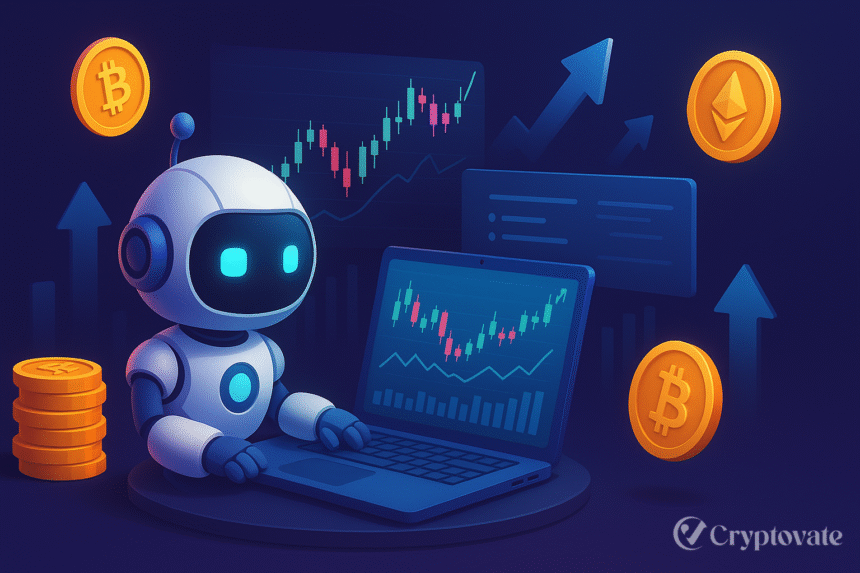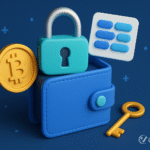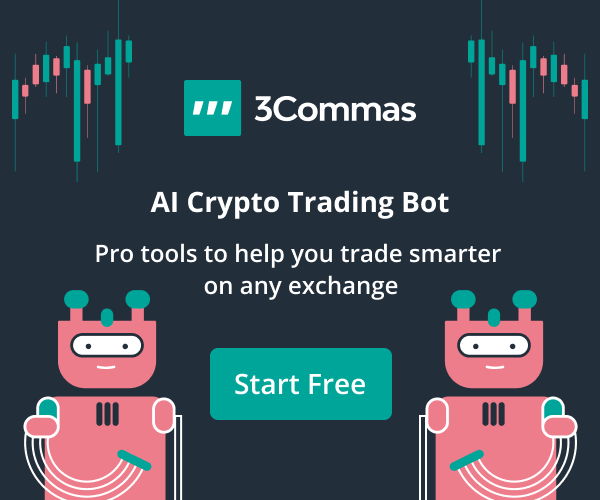– Ad –
| Getting your Trinity Audio player ready... |
The financial markets in 2025 are faster, more complex, and driven by advanced technology. Trading bots have emerged as powerful tools for traders looking to automate their strategies, save time, and capitalize on market opportunities. These automated systems execute trades based on predefined rules, leveraging algorithms to analyze data and make decisions at lightning speed. But with great power comes great responsibility—trading bots offer significant benefits but also carry risks. This article explores the advantages, potential pitfalls, and a practical guide to setting up a trading bot in 2025.
What Are Trading Bots?
Trading bots are software programs designed to automate trading tasks in financial markets, including stocks, forex, cryptocurrencies, and commodities. They use algorithms to analyze market data, identify trading opportunities, and execute buy or sell orders without human intervention. In 2025, advancements in artificial intelligence (AI) and machine learning have made trading bots smarter, enabling them to adapt to changing market conditions and optimize strategies in real time.
Benefits of Using Trading Bots in 2025
1. Speed and Efficiency
Trading bots operate at speeds far beyond human capabilities. They can process huge volumes of market data, including price trends and technical indicators, in mere milliseconds. This allows them to execute trades at optimal moments, capitalizing on fleeting opportunities that manual traders might miss.
2. Emotion-Free Trading
Human emotions such as fear and greed can impair judgment, resulting in hasty decisions. Trading bots adhere to preset rules, delivering consistent performance free from emotional influence. This discipline is especially valuable in volatile markets like cryptocurrencies.
3. 24/7 Market Monitoring
Financial markets, especially crypto, operate around the clock. Trading bots can monitor markets 24/7, ensuring you never miss a trading opportunity, even while you sleep. This continuous operation is a game-changer for traders in 2025.
4. Backtesting and Optimization
Modern trading bots allow users to backtest strategies using historical data. This helps traders evaluate performance before risking real capital. AI-powered bots in 2025 can also optimize strategies by learning from past trades and market trends.
5. Scalability
Bots can handle multiple trades across different markets simultaneously. Whether you’re trading Bitcoin, forex pairs, or stocks, a bot can manage diverse portfolios with ease, saving time and effort.
Risks of Using Trading Bots in 2025
1. Technical Failures
Bots rely on stable internet connections, servers, and software. Glitches, power outages, or platform downtime can disrupt trading, potentially leading to missed opportunities or losses.
2. Over-Optimization
A bot optimized for past market conditions may not perform well in new environments. Over-optimized strategies can fail when markets behave unpredictably, as they often do in 2025’s fast-paced financial landscape.
3. Security Risks
Trading bots often require API keys to access exchange accounts. If not secured properly, these keys can be exploited by hackers, leading to unauthorized trades or stolen funds. Cybersecurity is a critical concern in 2025.
4. Lack of Human Intuition
While bots excel at following rules, they lack the intuition and adaptability of experienced traders. Sudden market events, like regulatory changes or geopolitical shocks, may catch bots off guard if not programmed to handle such scenarios.
5. High Initial Costs
Developing or purchasing a reliable trading bot can be expensive. Additionally, ongoing costs for maintenance, updates, and cloud hosting can add up, especially for custom-built bots.
Also Read: How to Read Crypto Charts: Technical Analysis for Beginners in 2025
How to Set Up a Trading Bot in 2025: Step-by-Step Guide
Ready to get started with a trading bot? Follow this step-by-step guide to set up your bot and start automating your trades.
Step 1: Define Your Trading Strategy
Before choosing a bot, outline your trading goals and strategy. Are you focusing on day trading, swing trading, or arbitrage? Define parameters like entry/exit points, risk tolerance, and indicators (e.g., moving averages, RSI). A clear strategy ensures your bot aligns with your objectives.
Step 2: Choose a Trading Bot Platform
In 2025, numerous platforms offer trading bots for beginners and advanced users. Popular options include:
- Pre-built bots: Platforms like 3Commas, TradeSanta, or HaasOnline provide user-friendly interfaces and pre-configured strategies.
- Custom bots: For advanced users, platforms like CCXT or Python-based libraries (e.g., Backtrader) allow you to code your own bot. Research platforms based on ease of use, supported exchanges, and fees. Ensure the platform supports your preferred market (e.g., Binance for crypto or Interactive Brokers for stocks).
Step 3: Select a Reliable Exchange
Choose a reputable exchange compatible with your bot. Ensure it supports API integration, has strong security measures, and offers the assets you want to trade. In 2025, exchanges like Coinbase, Kraken, and Binance remain popular for their robust APIs.
Step 4: Set Up API Keys
Most bots require API keys to connect to your exchange account. Generate these keys in your exchange’s settings, restricting permissions to trading only (disable withdrawals for security). Never share your API keys publicly.
Step 5: Configure Your Bot
Input your trading strategy into the bot’s settings. Specify parameters like:
- Trade size
- Stop-loss and take-profit levels
- Technical indicators
- Risk management rules Test your configuration in a demo account to ensure it performs as expected.
Step 6: Backtest Your Strategy
Use the bot’s backtesting feature to simulate your strategy with historical data. Evaluate metrics such as success rate, drawdown, and overall profitability. Adjust parameters if needed to improve performance.
Step 7: Start with a Small Investment
Begin with a small investment when trading with real funds to reduce potential risks. Monitor the bot’s performance closely for the first few weeks and make adjustments as needed.
Step 8: Monitor and Optimize
Even automated systems require oversight. Regularly check your bot’s performance, update strategies based on market conditions, and ensure your API keys remain secure. In 2025, AI-driven bots may offer auto-optimization features, but human supervision is still essential.
Best Practices for Using Trading Bots in 2025
- Start Small: Test your bot with a small investment to limit potential losses.
- Use Secure Platforms: Choose bots and exchanges with strong security protocols, like two-factor authentication (2FA).
- Stay Updated: Markets evolve, so regularly update your bot’s strategy to adapt to new trends.
- Diversify: Avoid depending solely on one bot or trading approach. Spread your risk across multiple assets or approaches.
- Learn Continuously: Stay informed about market trends and bot technology to maximize your success.
Conclusion
Trading bots in 2025 offer a powerful way to automate trading, save time, and capitalize on market opportunities. Their speed, efficiency, and emotion-free execution make them valuable tools for traders of all levels. However, risks like technical failures, security concerns, and market unpredictability require careful planning and oversight. By following the setup guide and best practices outlined above, you can harness the power of trading bots while minimizing potential pitfalls. Start small, stay informed, and let automation work for you in the dynamic markets of 2025.
FAQs
Are trading bots profitable in 2025?
Profitability depends on the strategy, market conditions, and bot configuration. While bots can enhance efficiency, they don’t guarantee profits. Backtesting and careful monitoring are key to success.
Can beginners use trading bots?
Yes, many platforms offer user-friendly interfaces for beginners. Pre-built bots with simple settings are ideal for those new to automated trading.
Are trading bots safe to use?
Trading bots are safe if you use reputable platforms, secure API keys, and follow best practices like enabling 2FA. However, risks like technical glitches or hacking remain.
Is programming knowledge required to operate a trading bot?
Not necessarily. Pre-built bots are designed for non-coders, while custom bots require programming knowledge (e.g., Python or JavaScript).

















